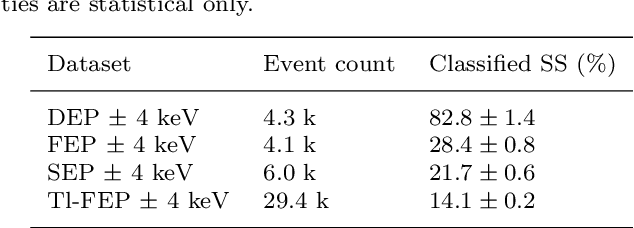A. J. Zsigmond
Deep learning based pulse shape discrimination for germanium detectors
Mar 04, 2019



Abstract:Discrimination between different event signatures is a key requirement for many experiments based on semiconductor radiation detectors. A prime example are experiments searching for rare processes like neutrinoless double beta decay with germanium detectors. Their sensitivity depends on the background level and how well background events can be identified through their signal structures. We present a novel method to identify one of the most abundant classes of background events in these experiments based on machine learning techniques. Our method utilizes two neural networks, one trained in an unsupervised fashion to extract the most important features from the detector signal, the other trained to classify events based on this feature representation. This approach results in a data-driven classification scheme trained on a large set of unlabeled and a small set of labeled events. To validate our method, we use signals of a broad-energy germanium detector irradiated with a $^{228}$Th gamma source. We find that it matches the performance of state-of-the-art algorithms commonly used for this detector type. However, it requires less tuning and calibration and shows potential to identify certain types of background events missed by other methods.
 Add to Chrome
Add to Chrome Add to Firefox
Add to Firefox Add to Edge
Add to Edge